“Cooler than Cool Roofs: How Heat Doesn’t Move Through a Green Roof”
“Cooler than Cool Roofs: How Heat Doesn’t Move Through a Green Roof” is the 7-part Green Roof Energy Series explaining the key aspects of green roof heat transfer issues and the best ways to take advantage of a green roof’s energy benefits by Greenroofs.com collaborator Chris Wark.
Green Roof Energy Series Part 6: Green Roofs vs. Cool Roofs
By Chris Wark, Energy Editor – Originally posted March 2, 2011
Cool roofs are pretty cool, but whether or not they save as much energy as a green roof requires, as usual, a closer look at a) a cool roof, and b) a given green roof design.
First we need to review what makes a cool roof cool. As illustrated below, when sunlight hits the surface of a roof, some of it is reflected back into space (or into a neighboring building) and the rest is absorbed into the roof.
For example, a common roof surface may reflect 30% of the sunlight and the laws of thermodynamics say that the remaining 70% must be going through the surface and into the rest of the roof structure. Referred to as the roof’s “reflectivity,” it is the simplest form of an “energy balance.” This includes all wavelengths of sunlight: visible light, ultraviolet radiation, and infrared (long-wave) radiation.
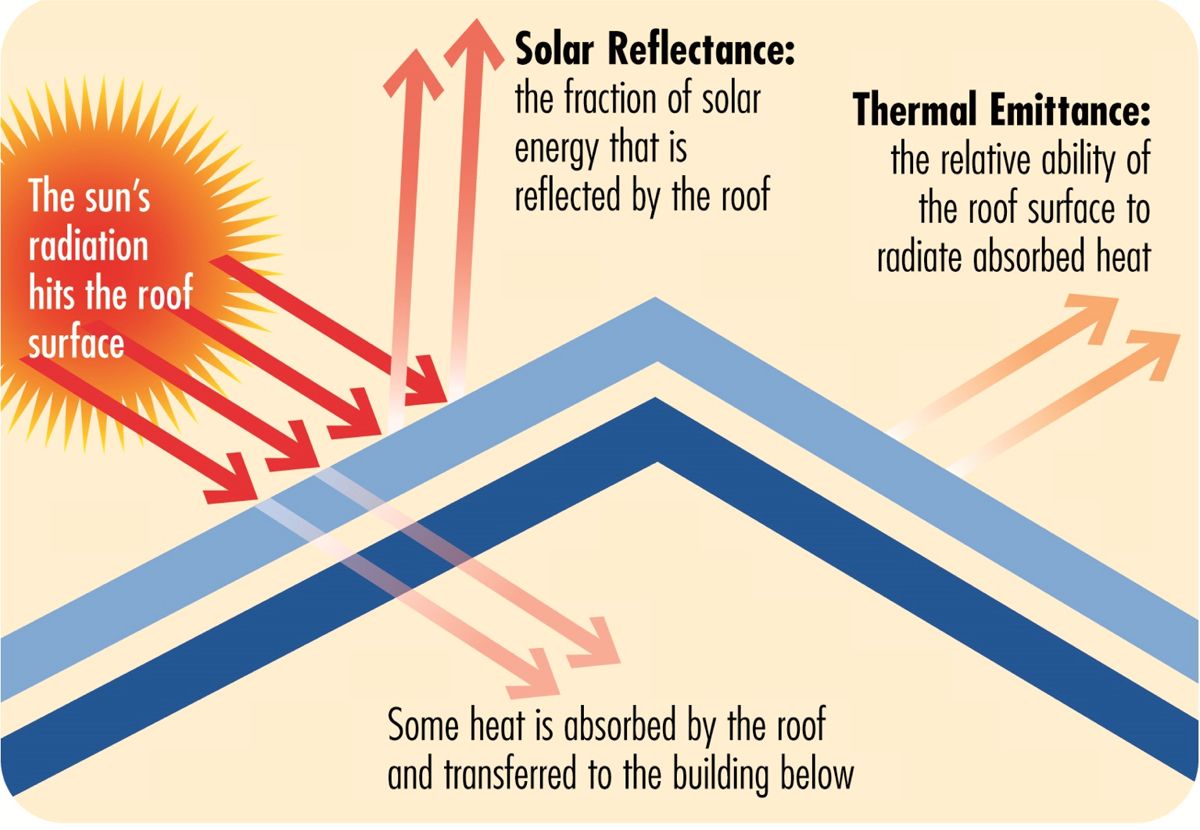
Image: Cool Roof Rating Council
Another important thing happens at the surface of a roof (and when I say “surface,” I mean the first layer of molecules, literally). The roof surface radiates heat (long-wave radiation) back into space at almost all times, regardless of where the sun is or what it is doing because outer space is always colder than anywhere on Earth. This is called “thermal emittance” and the extent to which it happens depends on certain characteristics of the surface material and the temperature of the surface – the higher the surface temperature, the more heat gets emitted.
Thermal emittance to the sky can be reduced by high humidity, cloudiness, or even stopped altogether by thick fog. There is such a thing as the “sky temperature” which is determined by the characteristics of the atmosphere and it can be as low as -50 degrees F with extremely clear dry air or as high as the local air temperature when it is foggy.
Again, thermal emittance happens at night as well as during the day regardless of how cold the roof surface temperature might be. In fact, this phenomenon applies to the surface of anything exposed to the sky, thus the frost on your pumpkin on a clear October night when the temperature drops down to around 40 degrees.
This also means thermal emittance occurs during the winter when you do not necessarily want it to, so the use of a cool roof can result in an annual energy penalty in most cooler climates, depending on how the building is being used. But then, if winter brings a thick blanket of snow, reflectivity and emissivity no longer mean anything, regardless of the roof type. Every situation is different.
A roof is considered by the US Green Building Council as “cool” if it reflects at least 70% of sunlight and has a thermal emissivity value of at least 0.9 on a scale of 0 (no emittance) to 1 (maximum emittance physically possible). Some roof surfaces, like asphalt, have very low reflectivity but very high emissivity, so even though they get super hot during mid-day, they could be even hotter, then they cool down at night much more than if they had low emissivity.
Some light colored roofs reflect sunlight reasonably well, but have very low emissivity, keeping them warm at night. For maximum cooling, the trick is to come up with a material that has both high reflectivity and high emissivity, like the white materials shown in the following chart of various cool roof materials.
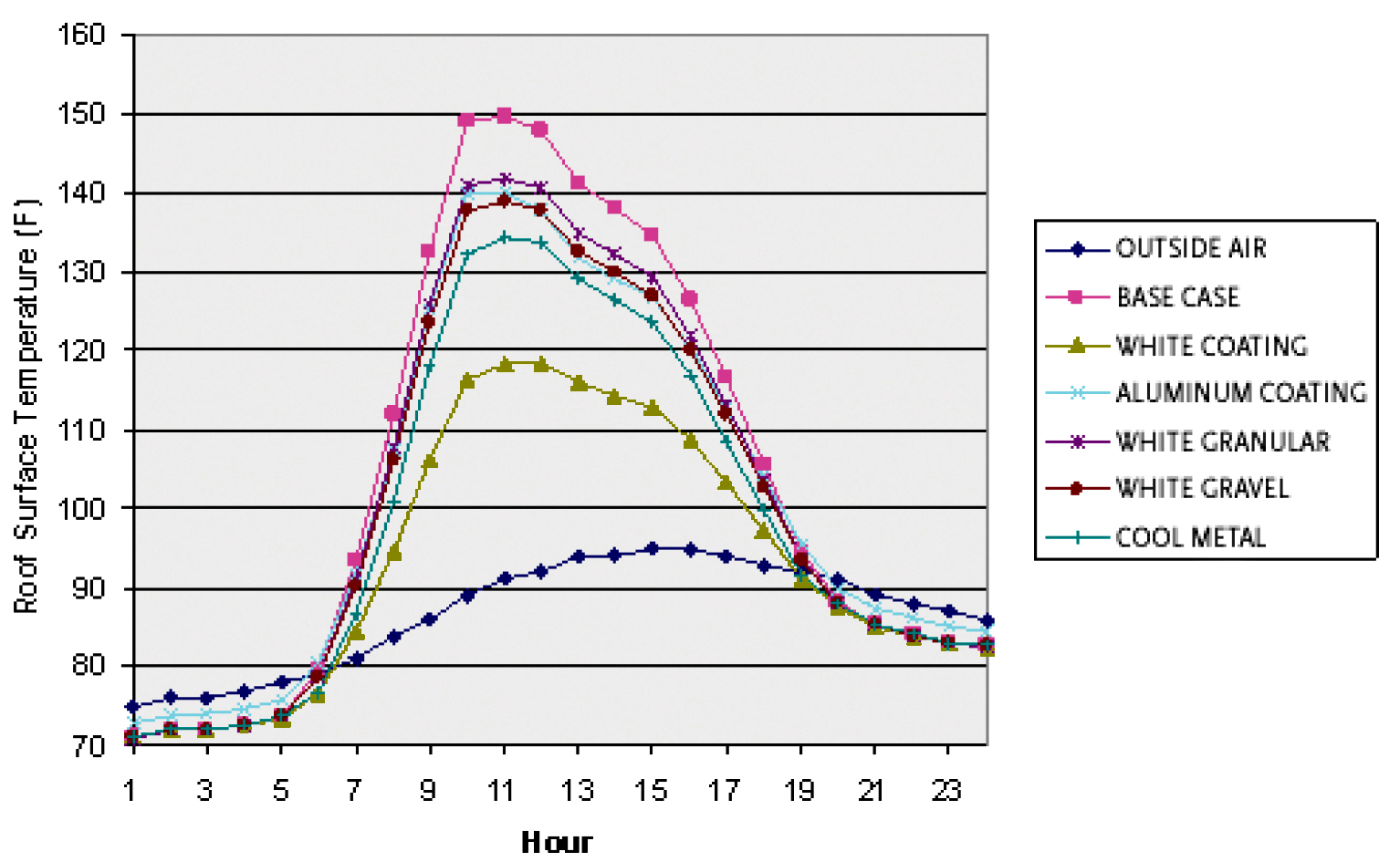
Roof Surface Temperature in DDC Energy Model from the New York City DDC Cool & Green Roofing Manual
One important note on cool roofs: they tend not to stay as cool as advertised. Soon after installation, their surfaces get directly abused by ultraviolet radiation from the sun, rain, dirt and wind such that they typically lose 10% to 20% of their reflectivity within the first year or two. It is simply not realistic to claim a reflectivity greater than 70% for a roof that is more than two years old unless it has been cleaned on a regular basis, and it is rare to find a building owner who loves their cool roof that much.
Now for the comparison with green roofs (as if!).
Let’s face it, defining a green roof is like describing the flavor of ice cream. Tell me what kind of green roof, where it is, how it is used, what is growing on it and I can tell you something about its energy benefits and how it compares to some sort of cool roof. To keep this discussion simple, let’s work with a minimalistic extensive roof in, say, Chicago – not much thermal mass but supporting foliage that provides 100% net coverage during the summer and goes quite dormant during the winter.
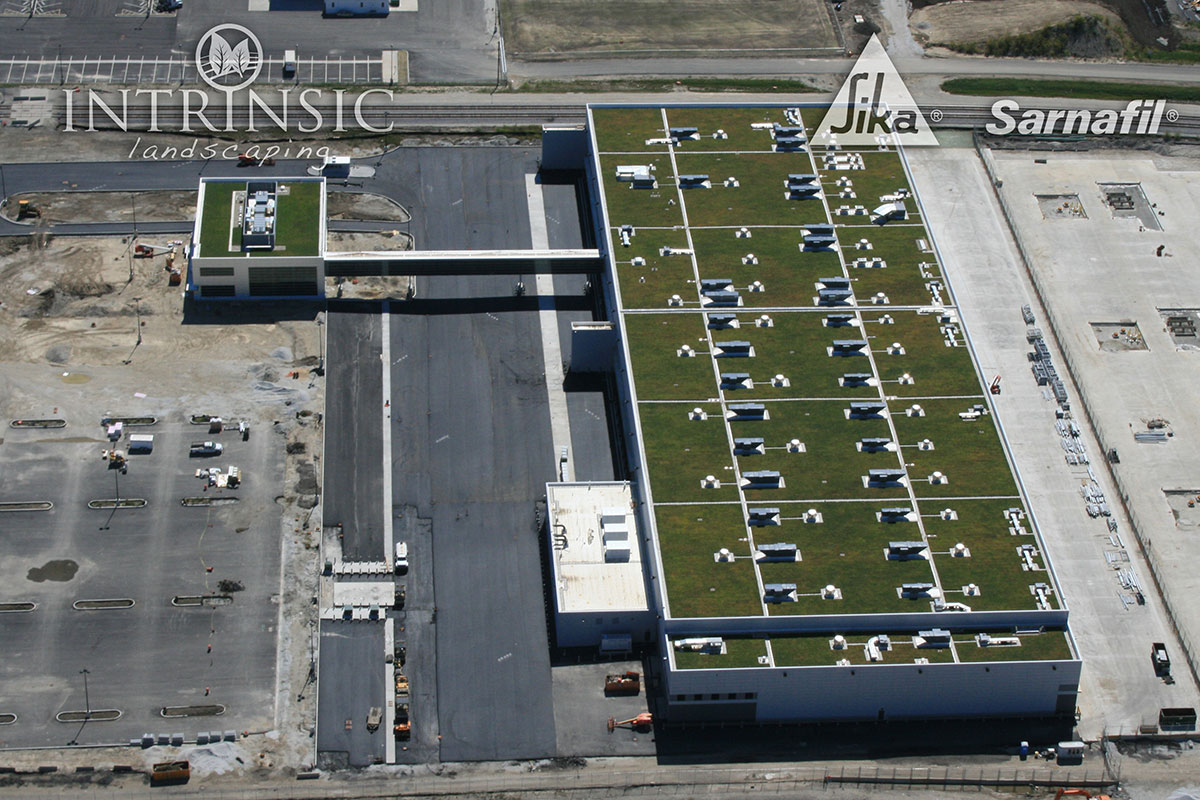
FedEx Cargo Relocation Project, Main Sort Building at O’Hare Airport. Image: Intrinsic Landscaping, Inc.
With green roofs, the outermost layer is the most crucial, such that the foliage can be thought of as its “surface” when discussing energy. Obviously, it is not a simple, smooth surface that can be described as easily as a sheet of plastic (i.e. cool roof).
If our concern is the overall amount of sunlight actually reflected away from building, we can’t look at the reflectivity of individual leaves because each leaf is most likely not anywhere near horizontal. In fact, it is probably reflecting light into a neighboring leaf. The term used for the overall or aggregate solar reflectivity of a complex surface is “albedo.”
A wide range of reflectivities for individual leaves can be found in vegetation, depending on the species and how much the plant is being stressed – some drought resistant plants get shinier when stressed. Other plants change leaf angle when stressed which affects the overall albedo.
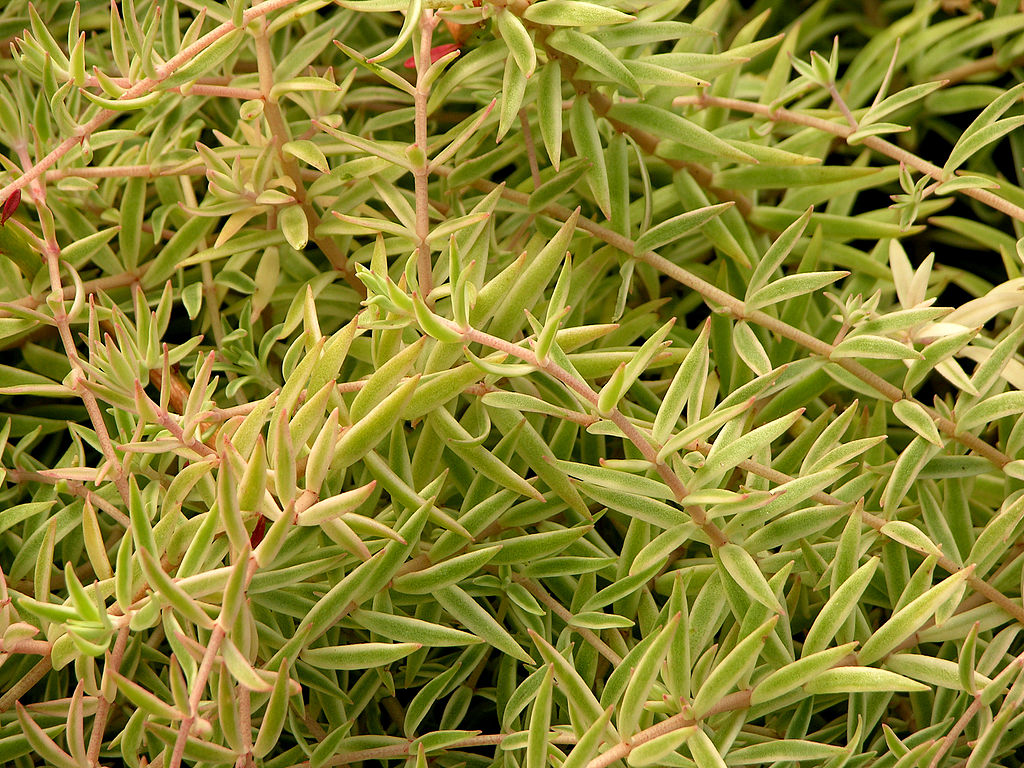
Sedum lineare ‘Variegatum’ Stems at Chanticleer Garden, Photo by and (c)2006 Derek Ramsey (Ram-Man), CC BY-SA 3.0, via Wikimedia Commons
For the most part, an increase in individual reflectivity translates into an increase in albedo which can range from about 0.15 (15% of light reflected away) to about 0.5 (half the light reflected away). A study by South China University of Technology measured the albedo of Sedum lineare, a popular green roof plant in China, to be about 0.3. Columbia University’s green roof research has measured an average daytime albedo of mixed sedums at around 0.22. Research at Penn State reports sedum albedo of 0.15. It should be noted that none of these measurements were acquired in a controlled environment, while other studies of crop plants have been studied more rigorously and show higher albedo values.
Foliage also tends to have high emissivity – typically 0.80 to 0.85 for succulents, including some sedums, up to 0.99 for less drought tolerant plants. Generally, smoother, shinier leaves will have lower emissivity, but higher reflectivity. Again, these values can change depending on how much a plant gets stressed.
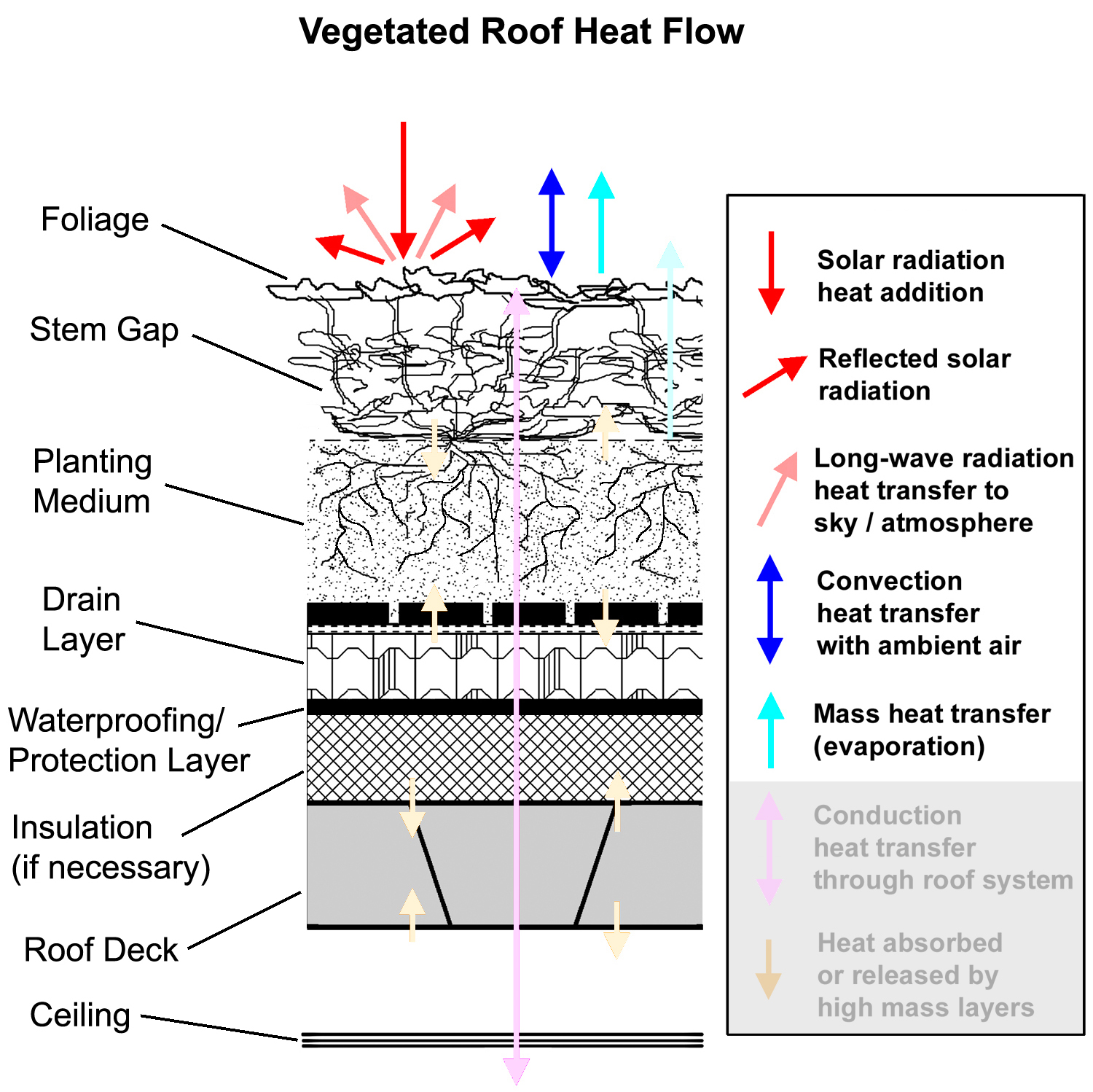
To control sun-radiated heat, a green roof also uses convection and evaporation. Copyright 2011 Christopher Wark
Yet as we saw in Part 2: Evapotranspiration and Part 3: Keeping Drought-Resistant Plants Cool, reflectivity and emissivity are only part of the story, otherwise all plants would be very shiny and fuzzy with reflectivities upwards of 95%, or a big cactus, which is built to handle high skin temperatures. Convection and evapotranspiration play an important role in always keeping foliage temperatures within 10 to 15 degrees of outdoor air temperatures, compared to the best cool roofs which often heat up to 120 degrees on a 90 degree day.
That’s great for helping with the cooling, but what about winter? What happens when temperatures drop below freezing and those pulpy little sedum leaves shrivel up and go dormant? Same thing that happens with most other non-evergreen plants.
For one thing, they become considerably less reflective. For another thing, their overall surface area becomes much smaller (or drops completely), so they emit less heat. Not only that, the lower branches and even some of the media get exposed to the sun. This means a green roof will absorb more radiant heat during the winter than in the summer, unlike a cool roof which always reflects the same fraction of sunlight (often resulting in a big winter energy penalty in cold climates).
Then, when winter gives way to spring, exposing the media to sunlight accelerates the warming of the plants. One of nature’s more clever strategies, I say.
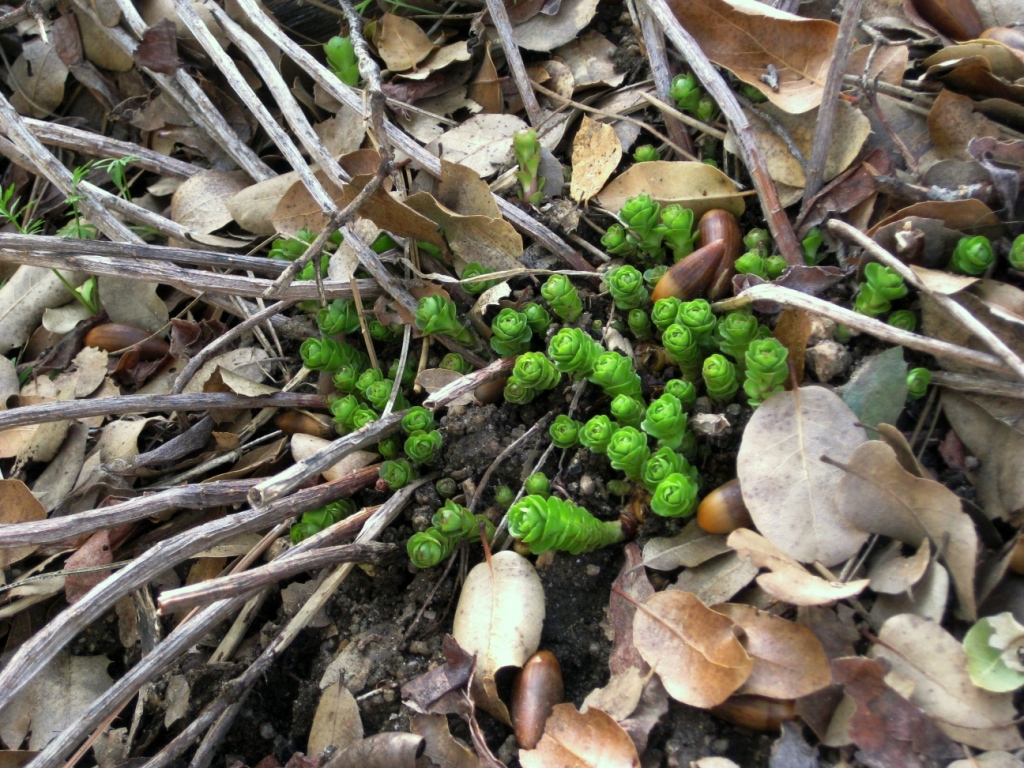
First spring sedums rising from winter litter: Gold Sedum, Sedum kamtschaticum ‘Golden Carpet’ pops up. Image: Sierra Foothill Garden
One last issue that should be mentioned when comparing products is “embodied energy” – the energy required to manufacture, deliver and install a product. This is an extremely important energy topic that has been neglected so far in this series because it is not directly related to the heat transfer of a building. It is, however, relevant to an overall energy comparison of roofing systems.

Cool roof. Image: APOC
Why? Because a cool roof will only last a few years longer than a more conventional membrane before needing to be replaced, whereas a green roof extends the life of a membrane more-or-less indefinitely. Each time a cool roof is replaced every 20 years or so, considerable energy must be spent to get the job done. Saving that energy is another advantage of green roofs.
Here is the rundown of a sedum-covered extensive green roof vs. a typical 3-year-old cool roof:
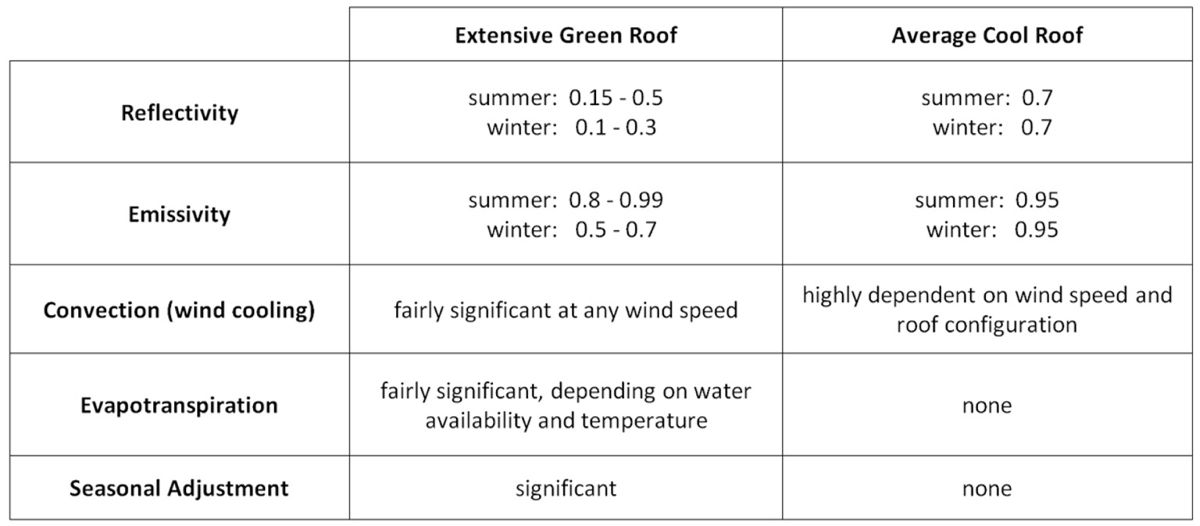
Throw in the myriad of indirectly energy-related hydrological and environmental benefits of vegetating a rooftop, and it becomes more clear why green roofs are the coolest.
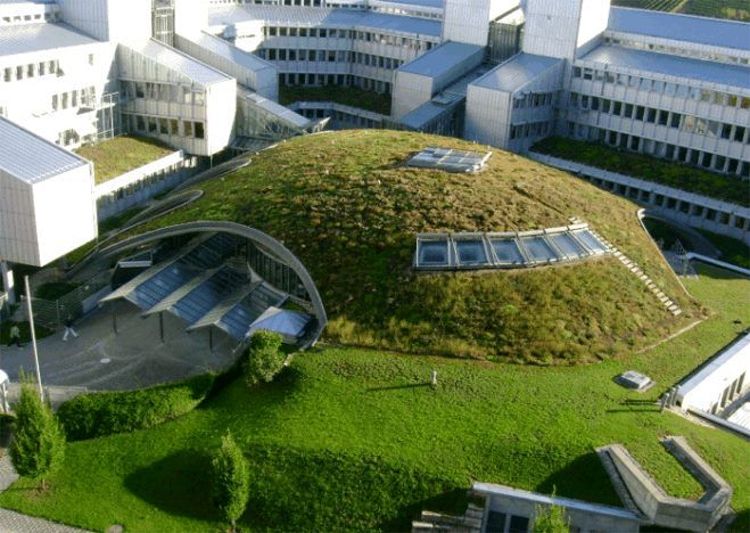
Or maybe 6 episodes of this technical stuff have resulted in more confusion than clarity. Hang on for one last installment next month when I wrap all this up in a surprisingly neat little package and decide which roofs to put them on.
Copyright 2011 Christopher Wark
~ Chris Wark
References:
1. www.nyc.gov/html/ddc/downloads/pdf/cool_green_roof_man.pdf There are a few green building manuals out there, including plenty of other governmental resources, but I am partial to this one because it goes into really good detail on roof issues. The fact that I contributed to it has absolutely nothing whatsoever to do with my partiality….
2. www.commercialwindows.umn.edu/issues_energy1.php Although this page is for windows, it gives a great technical summary of solar radiation, reflectivity, absorptivity, and emissivity.
3. www.omega.com/literature/transactions/volume1/emissivityb.html#s1 Good emissivity chart of common non-metallic materials, many of which are used in construction. Emissivity can be difficult to grasp and comparing some of these values for familiar materials might help.
4. http://5e.plantphys.net Zeiger, Eduardo, and Taiz, Lincoln. Plant Physiology (Online), 5th edition. Sinauer, 2010. Good online companion to the text. Energy issues are addressed most directly in Chapter 9.
5. Incropera, Frank and DeWitt, David. Introduction to Heat Transfer. John Wiley and Sons, 1990. Classic heat transfer text with all the theory, equations and proper procedures an engineer needs to calculate radiative heat transfer correctly, including a discussion of “sky temperature.”6. Mills, A.F. Basic Heat and Mass Transfer. Irwin, 1995. Ditto.
A few different studies were mentioned that I hesitate to officially reference because of poor substantiation, and in a couple of cases, poor experimental technique (in my humble opinion).
Publisher’s Note:
See Chris Wark’s entire 7-part Green Roof Energy Series from 2010-2011 online and in PDF: “Cooler Than Cool Roofs: How Heat Doesn’t Move Through a Green Roof.“
Christopher G. Wark

Christopher Wark is Principal of Wark Energy Consulting and the founder of Ponix MicroAg LLC, a development-stage company that is creating a line of compact plant enclosures for the CEA market. Chris has over 30 years of multidisciplinary engineering experience providing mechanical, analytical, and electronics support and services to manufacturers, universities and national labs. He holds Bachelor and Master of Science degrees in Mechanical Engineering (with a minor in Materials Science) from Washington State University where his graduate work focused on thermodynamics, fluid dynamics, and combustion.
For the past 19 years, Chris has focused his efforts on the development and promotion of technical solutions in architecture and construction. He has provided energy and environmental quality analysis, CFD modeling, and LEED consulting services for several engineering and building consulting firms in New York and California. In 2002, Chris established SHADE Consulting/Green Roof Innovations (GRI) with his wife Wendy.
With GRI, Chris developed several innovative modular eco-roof systems and in 2010, Chris designed a modular planting system in partnership with Guiyang Chuangjia High-Tech Accelerator Co. LTD in Guiyang, China. In Guiyang, he saw how most of the apartment balconies and rooftops were filled with vegetable gardens. The idea of providing an improved environment for food production in built environments, along with key GRI design concepts, inspired the development of the patented pPod™ miniature greenhouse developed by Ponix MicroAg.
Contact Christopher Wark at: cwark@pponix.com, 917-565-6919.
 Greenroofs.comConnecting the Planet + Living Architecture
Greenroofs.comConnecting the Planet + Living Architecture
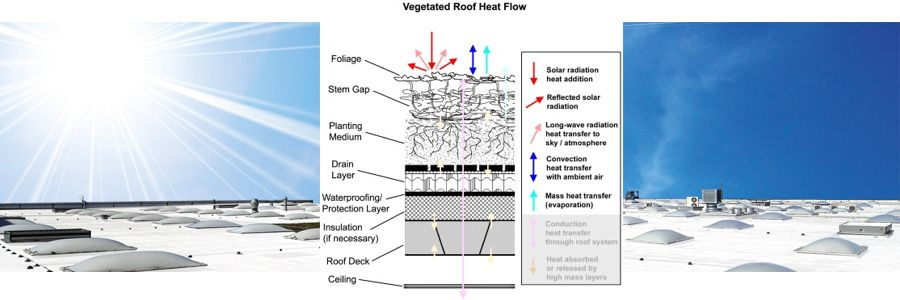





#TBT: Green Roof Energy Series “Cooler Than Cool Roofs: How Heat Doesn’t Move Through a Green Roof” | Celestine Design
[…] Part 6: Green Roofs vs. Cool Roofs […]